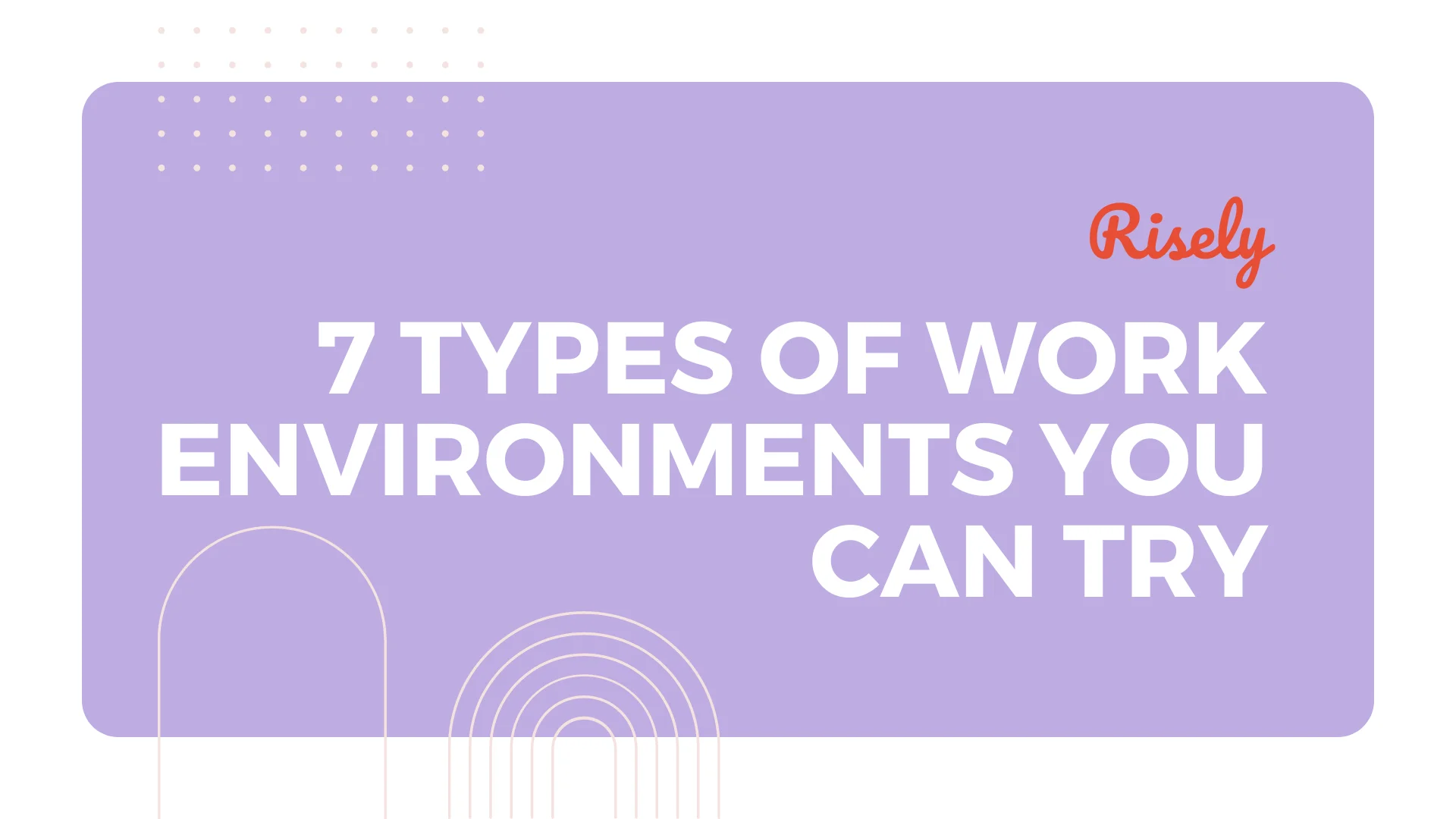How to create a Positive Workplace Environment? 8 Proven Hacks
When it comes to work, most of us want a positive workplace environment where we can feel productive and rewarded. But often, this doesn’t happen in the workplace due to factors like stress, anger, and poor communication. That’s why it’s so important for managers to create a healthy workplace environment. Doing so can help reduce stress levels and promote an environment where everyone feels appreciated. This blog post will take a closer look at what makes a positive workplace environment and show you how to create one yourself. So start building that positive workplace environment today that unlocks your team’s success!- How to create a Positive Workplace Environment? 8 Proven Hacks
- What is a positive workplace environment?
- Characteristics of a Positive Workplace Environment
- Examples of a positive workplace environment
- Why should managers build a healthy workplace environment?
- What role can a team leader play in creating this positive environment?
- Positive Workplace Environment Ideas for Managers
- Conclusion
- Positive Workplace Environment FAQs
- Other Related Blogs
What is a positive workplace environment?
A positive workplace environment is where individuals are respected and valued. There is a clear delineation of roles, expectations are transparent, and everyone has an equal opportunity to contribute and be recognized for their work. It can also involve mentorship programs that help employees develop skills or grow in their careers. A positive workplace environment, by definition, is conducive to healthy work-life balance and productivity. In addition, workplaces with healthy environments have policies and procedures in place to address employee complaints promptly and effectively. And finally, team events that focus on enhancing employee engagement promote camaraderie among coworkers instead of competition. By creating a solid foundation from the ground up, organizations build a healthier workplace environment where workers enjoy coming to work each day.Characteristics of a Positive Workplace Environment

Trust
A positive workplace environment is built on the foundation of trust. With mutual trust in the bedrock, the other elements of positivity follow. In addition, a positive work environment is characterized by a culture of transparency, communication, and mutual respect across all levels. Employees know what is expected of them, and feel free to communicate with their managers about any questions or concerns they may have. Furthermore, as trust is key to building a positive culture, every employee is willing to act by company values and standards without question. Read more: 10 powerful ways of building trust in the workplace that managers loveCooperation
A positive workplace environment has cooperation among its bedrocks. Cooperation leads to creativity, initiative, and teamwork—characteristics essential to work success. Employees work together as a team to achieve common goals, and they value collaboration over competition. This cooperative environment encourages employees to give maximum effort in their job duties, which leads to improved productivity and greater success for the team.Right behavior is encouraged
A positive workplace environment reinforces proper behavior from everyone. Employees comply with company values and standards. Furthermore, they have to treat others with respect, regardless of their position or status within the company. This type of environment fosters an ethical work culture where employees take pride in working hard and doing what is right, not just for themselves but also for their team members. The managers and leaders themselves establish the proper behavioral standards that incorporate accountability and loyalty.Communication
A healthy workplace environment always values communication. Communication is critical to building trust and cooperation, as well as removing conflicts. Employees can communicate effectively with their managers and fellow employees to work harmoniously in healthy workplace cultures. Open communication channels allow for effective coordination of tasks and improved employee morale. Read more: How effective communication works: 6 steps of communication processGrowth
A positive workplace culture aids the growth of the whole team. With each employee striving to improve their skills and knowledge, a positive work environment fosters creative ideas and innovation. Employee growth continues to be an essential part of a positive company culture, as it helps employees feel appreciated and valued. Moreover, it helps them personally and professionally, ensuring that they do not remain limited to the completion of routine tasks day after day. In addition, continuous learning allows employees to keep up with trends, which leads to increased productivity and better results for the organization. An atmosphere that inherently values everyone and pushes them towards improvement is a great asset for any team.Everyone builds together
An essential feature of a positive workplace environment is that everyone builds it together. While the managers can outline core values and ensure that they behave appropriately, workplace culture comes together only when everyone actively builds it together. The management does not enforce healthy workplace culture alone. Instead, the team members understand and live those values to make the space positive for everyone. It requires broad participation – from developing the ideas to practicing carrying them out and resolving issues.Other Interesting Reads
Examples of a positive workplace environment
An example of a positive workplace environment could be one in which employees are treated with respect and taken care of. It means that managers set an appropriate tone and ensure that all employers feel comfortable speaking up if they have concerns or dissatisfaction. In addition, employees should be encouraged to share ideas and suggestions, and their contributions should be respected. There is also a strong focus on teamwork so that everyone can contribute effectively to the company’s overall success. Finally, there is a sense of community where employees support each other professionally and socially. We can notice examples of positive workplace environments from real life too. Search engine giant Google has consistently gained recognition for fostering a healthy workplace culture. Among the significant features that make Google’s workplace culture great is a care for the well-being of employees, which is ensured through multiple avenues that range from health insurance and mental wellness initiatives to emergency support programs. Additionally, it allows employees support for education and upskilling, taking their personal growth further. Positive workplace culture is not just about the perks! Google has maintained a high rank consistently for many reasons. Employees enjoy flexibility, ownership over their projects, and great opportunities to bring their ideas to life. All of it goes to building a workplace culture that is admired by all.Why should managers build a healthy workplace environment?
Managers can build high-value generating teams by creating a healthy workplace environment based around elements enabling collaboration and productivity. These teams hallmark creative efficiency, simultaneously making a mark for their managers. Managers who can build such teams unlock massive potential growth for themselves as they not only follow the values but also have the caliber required to influence others and turn them into assets for the team.More collaboration & low conflicts
A positive culture is an excellent environment to work in because it leads to more collaboration and less conflict. Employees feel comfortable speaking up since they know managers will appropriately address their concerns. It reduces the chances of disputes or injuries, which can hurt productivity.Productivity boost
Building a healthy culture in the workplace also has a positive impact on employee productivity. They are less likely to be fatigued and burnt out and avoid existential crises. Employees who work in an environment that is supportive and positive tend to be more motivated and engaged than those who work in places where they feel their skills are not valued. Furthermore, they are more likely to put forth their best effort since they know it will lead to satisfaction at the end of the day.Creative teams
Healthy workplace environment is also conducive to building creative teams. Employees are open to feedback and suggestions, which helps them develop innovative solutions to problems. In turn, this leads to better products and services that meet the needs of their teams. Moreover, the employees are confident and trust the management with their ideas.Low turnover
Another benefit of a positive environment is that it leads to low turnover rates. Employees who are happy with their work environment are more likely to stay in the company for extended periods of time. Not only that, but they also tend to be more productive and contribute value to the team daily. This makes it easier for managers to keep operations running smoothly. A positive workplace environment, most importantly, adds value to the life of a team by keeping it intact.Overcome challenges with ease
The environment in which employees work can be a significant obstacle to success. A healthy culture promotes productivity and reduces the chances of disputes. When employees know that managers will appropriately address their concerns, they are less likely to feel frustrated. It promotes positive communication and teamwork, which is essential for success. These features are highly crucial when teams are facing challenges. A positive workplace environment lays the foundation for values that allow teams to tide through in the face of challenges.
What role can a team leader play in creating this positive environment?
Set, understand, and follow your values
One of the most critical aspects of creating a positive work culture is setting clear values. It should be done at the company level and by individual employees. It is essential that everyone understands and agrees on the company’s core values to create a sense of unity and trust. Teams must practice values daily through actions rather than just talking about them. This way, team members will know that their actions reflect these values and contribute positively to workplace culture. Setting up company culture begins with onboarding and continues with every activity subsequently, making it a crucial part of a manager’s job. Read more: 15 Personal Values Examples and Effective Tips to Build Your OwnBuild accountability in your teams
Another critical factor in building a positive work culture is instilling accountability. It means that team members are held responsible for their actions and must be willing to face the consequences if they do not live up to expectations. Accountability creates a sense of ownership in the employees, which ultimately leads to improved teamwork. When teams feel like they belong to one another and take individual responsibility, they are more likely to take charge and do the work as if it’s their own; and not a burden to be completed. Building accountability will also save you from developing micromanaging tendencies.Focus on diversity
Building a positive work culture is not just about talking about values; it includes taking actual initiative too. Companies that focus on diversity create better teams and attract top talent. When employees feel like they can bring their whole selves to work, it breeds comfort and creativity. A team’s environment can only be termed positive if people from diverse backgrounds feel safe to express themselves. Hence, managers and leaders who wish to build positive workplaces need to focus on DEI initiatives that go beyond Pride month.Ensure psychological safety
Teamwork is effective when it’s safe to be open and candid. When team members feel comfortable talking openly, they’re more likely to share their ideas and work collaboratively. Psychologically safe environments are created through policies that protect employees from being harassed or bullied in any way. It includes creating a culture where all members respect one another, and equal values are accorded to their opinions.Use employee resource groups
Employee resource groups offer a way for employees to connect and share ideas in an informal setting. These groups can be used as forums to provide feedback, ask questions, and support. They also serve as channels of communication between managers and employees. By encouraging employee engagement through these groups, companies can create a culture that values teamwork and cooperation. Moreover, employee resource groups are an excellent way for employees to engage in conversations around professional development. They serve as a platform to grow and learn together, which employees value highly.Build relationships and bring people together
Building relationships is another important way to create a healthy workplace environment. When employees feel comfortable talking with their colleagues, they’re more likely to open up and share ideas. In addition, building positive relationships between team members can help build trust and cooperation. It allows for sharing feedback and ideas without fear of retribution or humiliation. Finally, teams with solid interpersonal bonds are more likely to solve problems collaboratively instead of fighting each other to win. Such bonds with managers are also essential to ensure that their teams are working with you, not just under you.Take note of the physical workplace too
The physical environment also plays a significant role in workplace culture. A positive environment is created when workspaces are clean and organized. Employees are physically comfortable with the workspace. In addition, creating an inviting workspace can boost morale and encourage employees to spend more time at their desks. Finally, ensuring all equipment is functioning correctly can help ease the workflow. It is also vital to ensure that adequate resources are available so that work is not disrupted and conflicts do not arise.Listen, take notes, and act
Ultimately, the key to creating a positive workplace environment is to listen, take notes, and then act. When employees feel they’re being heard and their concerns are being addressed, they’ll be more likely to stay in the company. On the other hand, if management doesn’t pay attention to employee feedback or isn’t responsive when conflicts arise, it can create an environment of tension and hostility. In either case, managers must keep track of how employees are doing and ensure everyone understands what’s expected.Positive Workplace Environment Ideas for Managers
- Lead by Example: Demonstrate the behavior and attitude you want to see in your team. Show respect, empathy, and professionalism in your interactions with team members.
- Recognition and Appreciation: Regularly acknowledge and appreciate your team’s efforts and accomplishments. Recognize individual and team achievements publicly, and consider implementing an employee recognition program.
- Empowerment: Give your team members autonomy and decision-making authority over their work when possible. Empowerment fosters a sense of ownership and responsibility.
- Work-Life Balance: Encourage a healthy work-life balance by respecting boundaries and providing appropriate flexibility. Avoid expecting employees to work long hours consistently.
- Inclusive Environment: Promote diversity and inclusion by valuing and respecting individual differences. Ensure that everyone feels welcome, heard, and represented.
Conclusion
Managers play an essential role in the development of a positive workplace culture. By establishing a culture of trust and respect, managers can help create a positive work environment conducive to employee productivity and engagement. There are several steps that managers can take to create a positive work environment. Beginning with the management team, establishing clear company values and goals, and engaging employees in creative work are all critical aspects of creating a positive culture. Showing appreciation for even the smallest gestures helps foster an environment of cooperative teamwork. Keep reading more on Risely for more helpful tips on leadership and management.Are you looking for ways to foster a positive workplace environment?
Take our free active listening toolkit and start building an environment that encourages productivity today!
Positive Workplace Environment FAQs
What are positive work attitudes?
Positive work attitudes are beliefs and emotions that shape how an individual approaches their work, such as enthusiasm, motivation, commitment, a sense of purpose, and a willingness to learn and adapt.
What role can a leader play in creating a positive workplace environment?
A leader sets the tone for the team. They help define the core values and key attitudes that the team adopts. By ensuring that they are contributing to a positive workplace environment, a manager can lead by adopting healthy habits such as active listening themselves. Moreover, when they see the system breaking, the leader can step-in and course correct for the team.
Other Related Blogs
7 Types Of Work Environments You Can Try
7 Types Of Work Environments You Can Try In today’s work culture, various types of work environments exist to cater to different philosophies, needs, and job functions. Each type offers…
How To Handle Criticism At Work? 7 Tips For Managers
How To Handle Criticism At Work? 7 Tips For Managers Handling criticism at work is a challenge that many managers face. Criticism can be difficult to handle whether it’s from…
Building Inclusive Workplaces: DEI Goals and How to Achieve Them
Building Inclusive Workplaces: DEI Goals and How to Achieve Them According to a LinkedIn study, 76% of job seekers mentioned diversity as a critical factor in evaluating potential workplaces. Yet, we…
How to Overcome the Top 10 Manager Biases at Work?
How to Overcome the Top 10 Manager Biases at Work? Ever feel a gut instinct tugging at your decisions, even in the face of logic? Nobel laureate Daniel Kahneman would…


